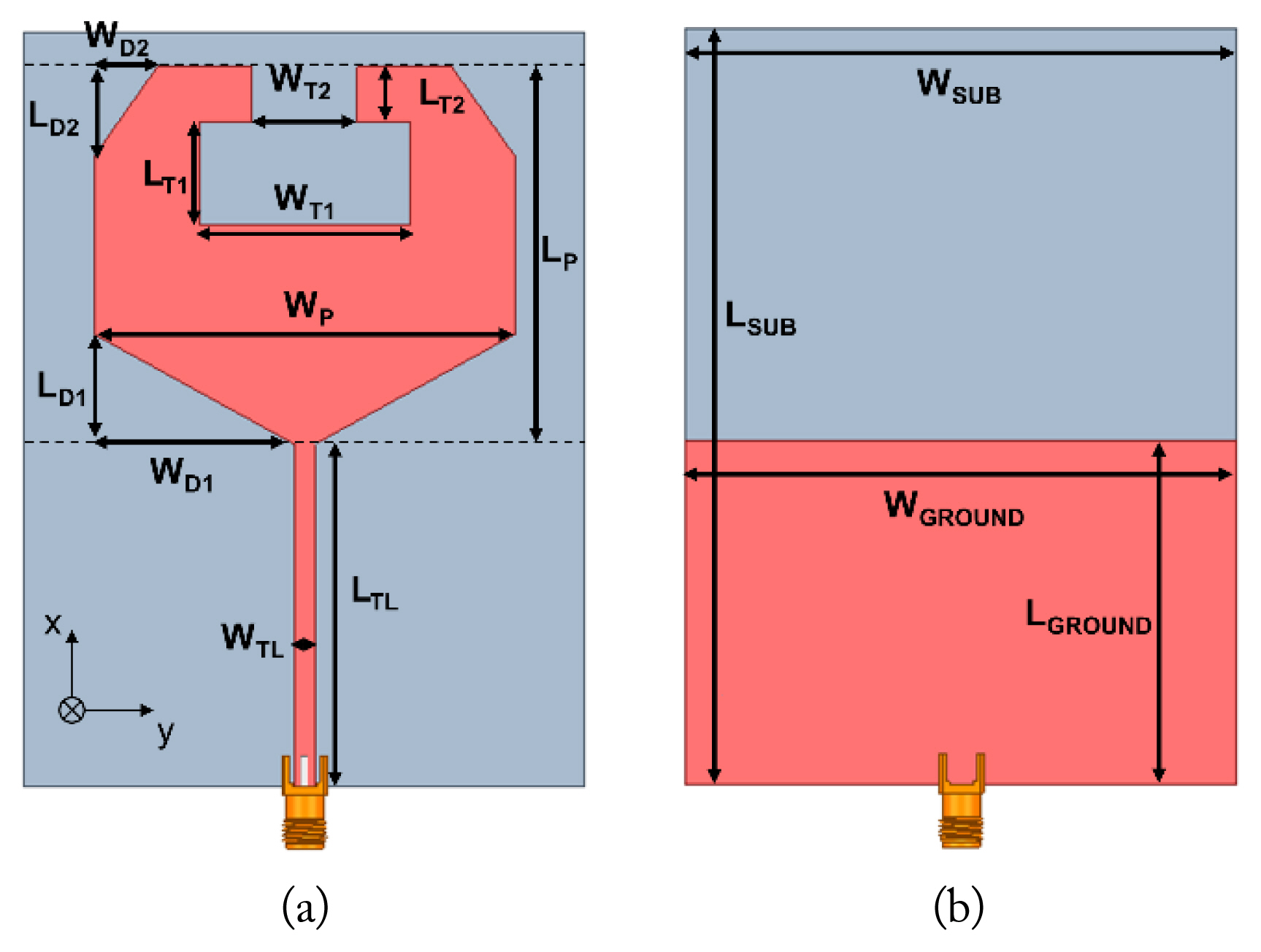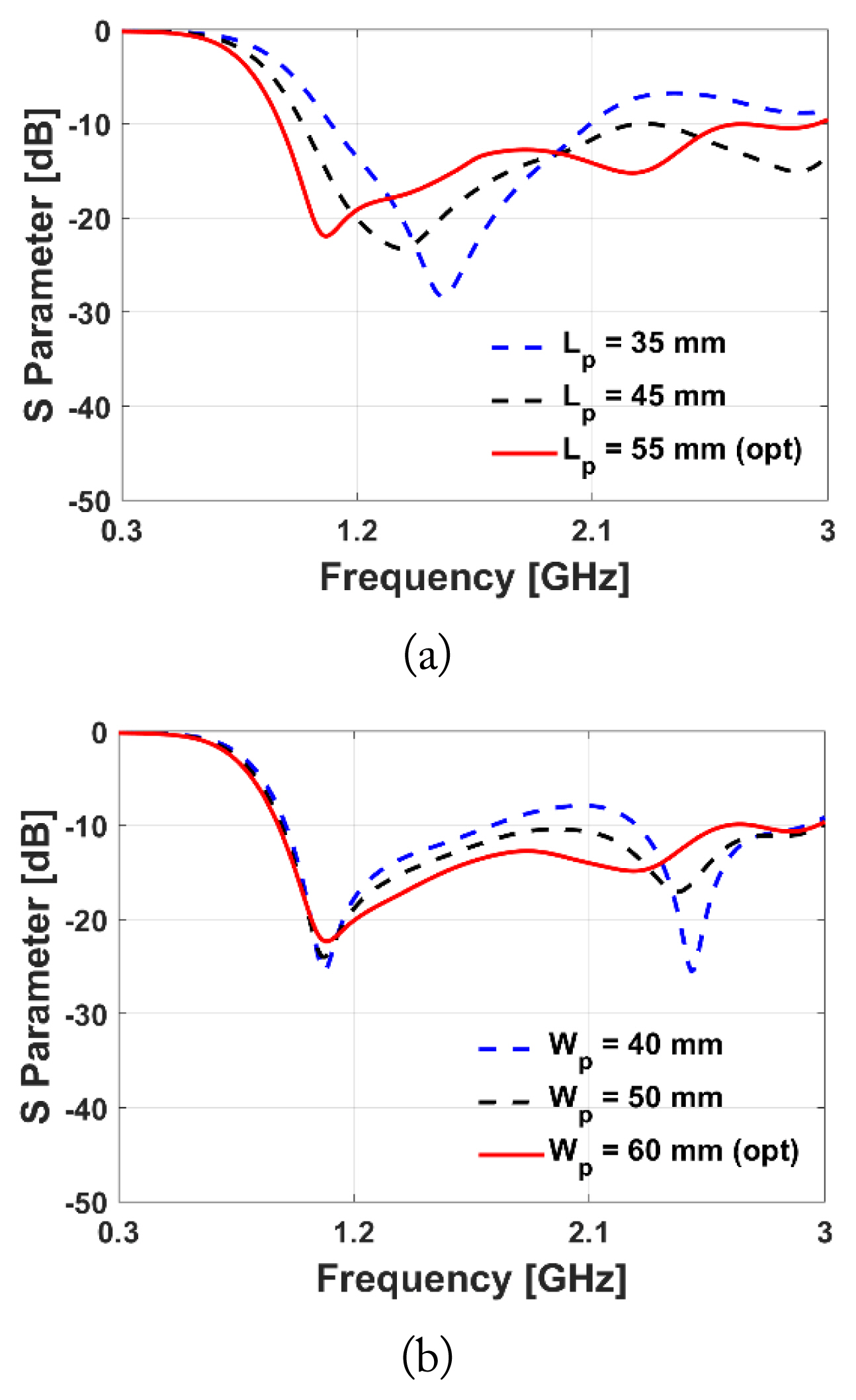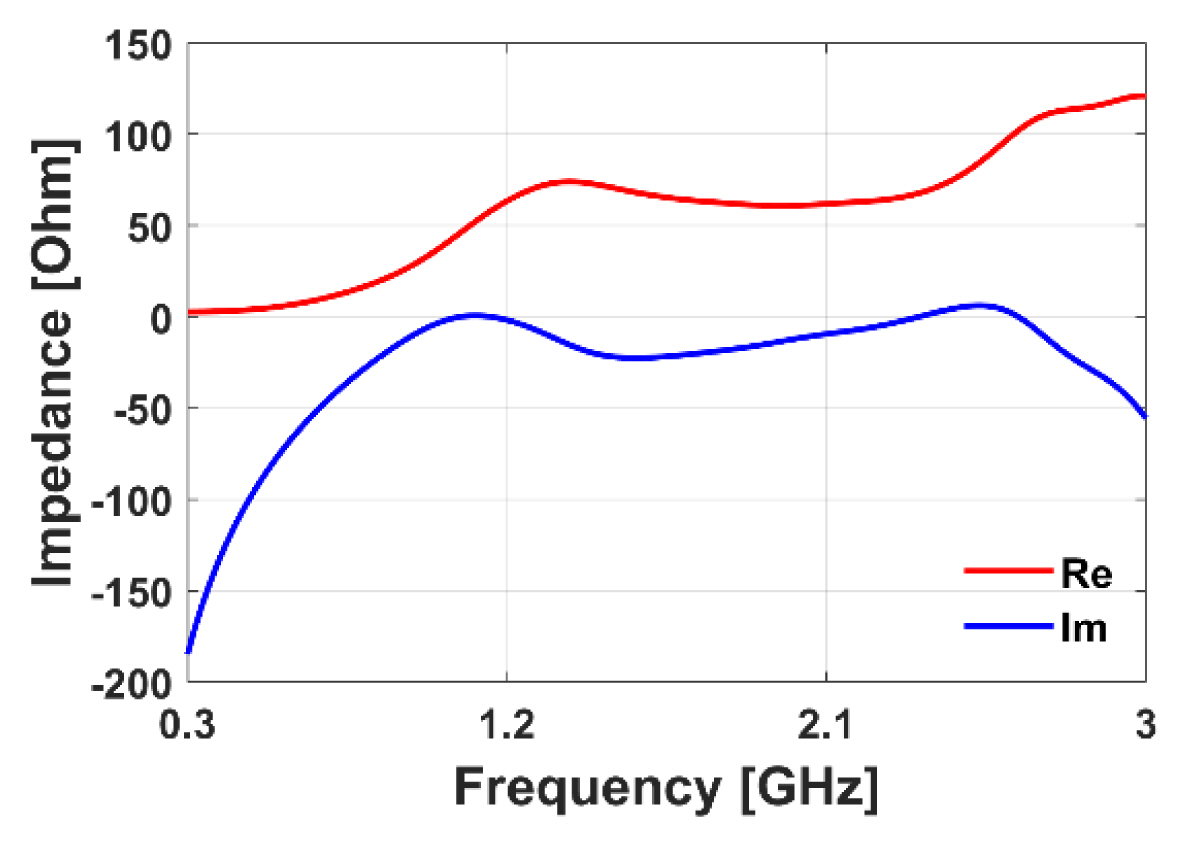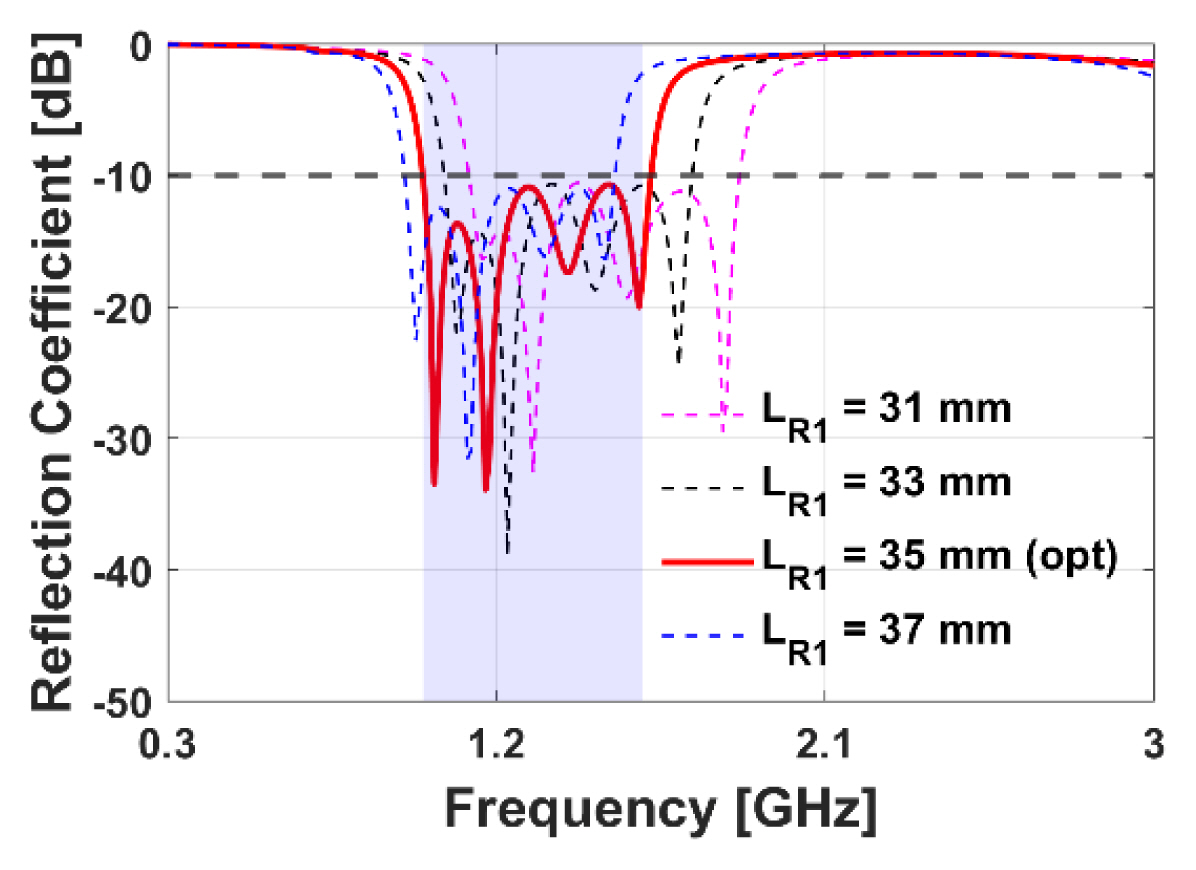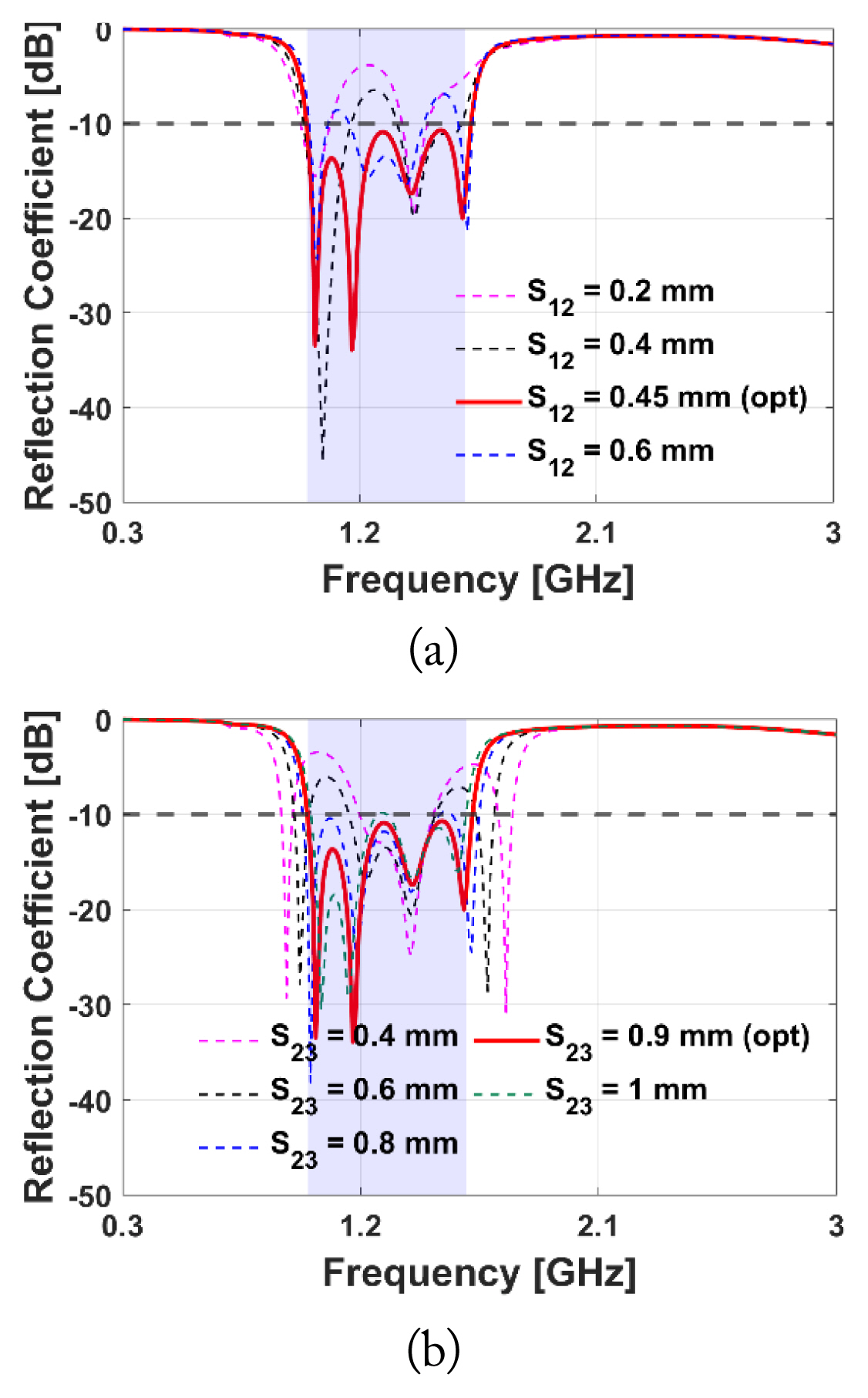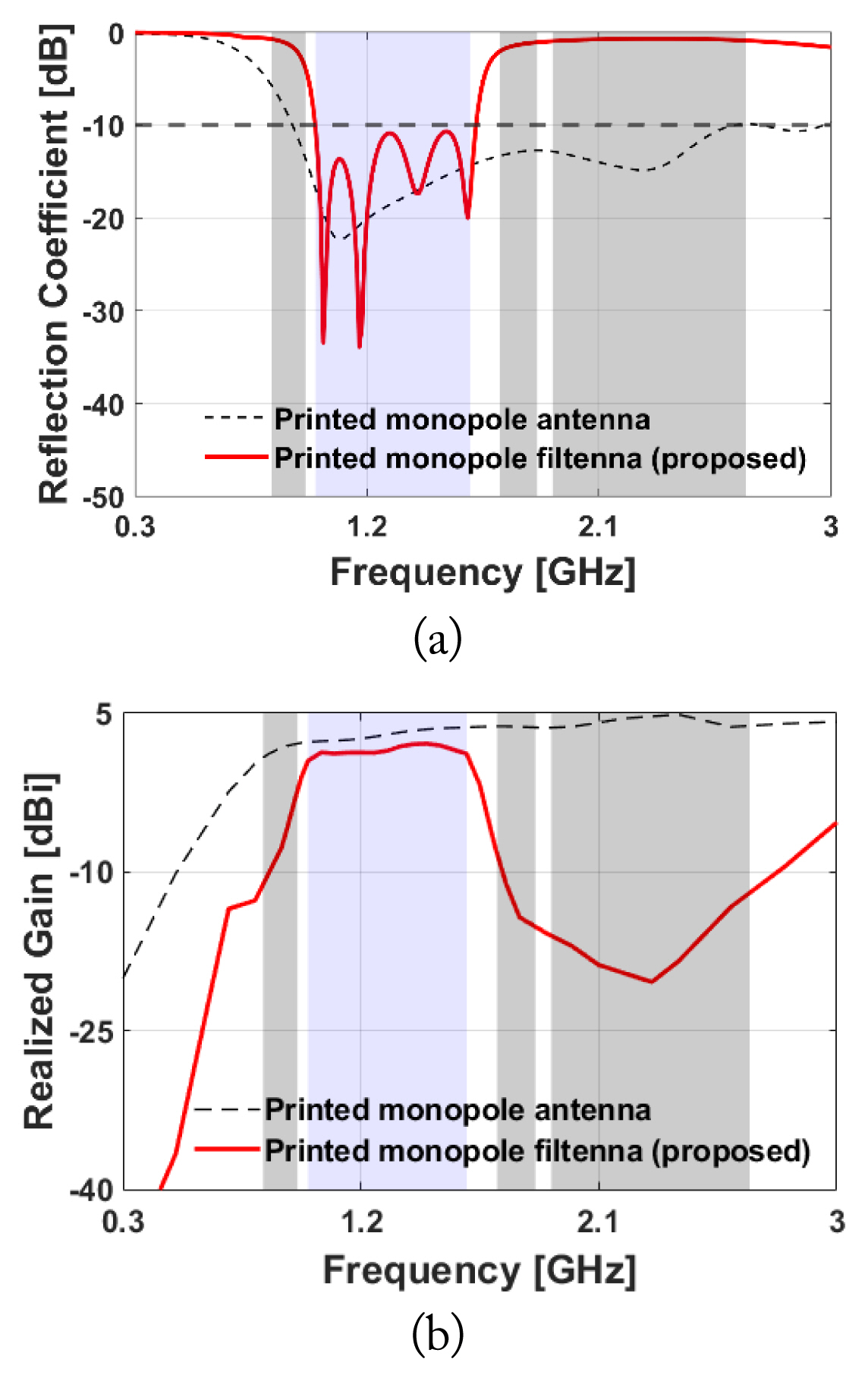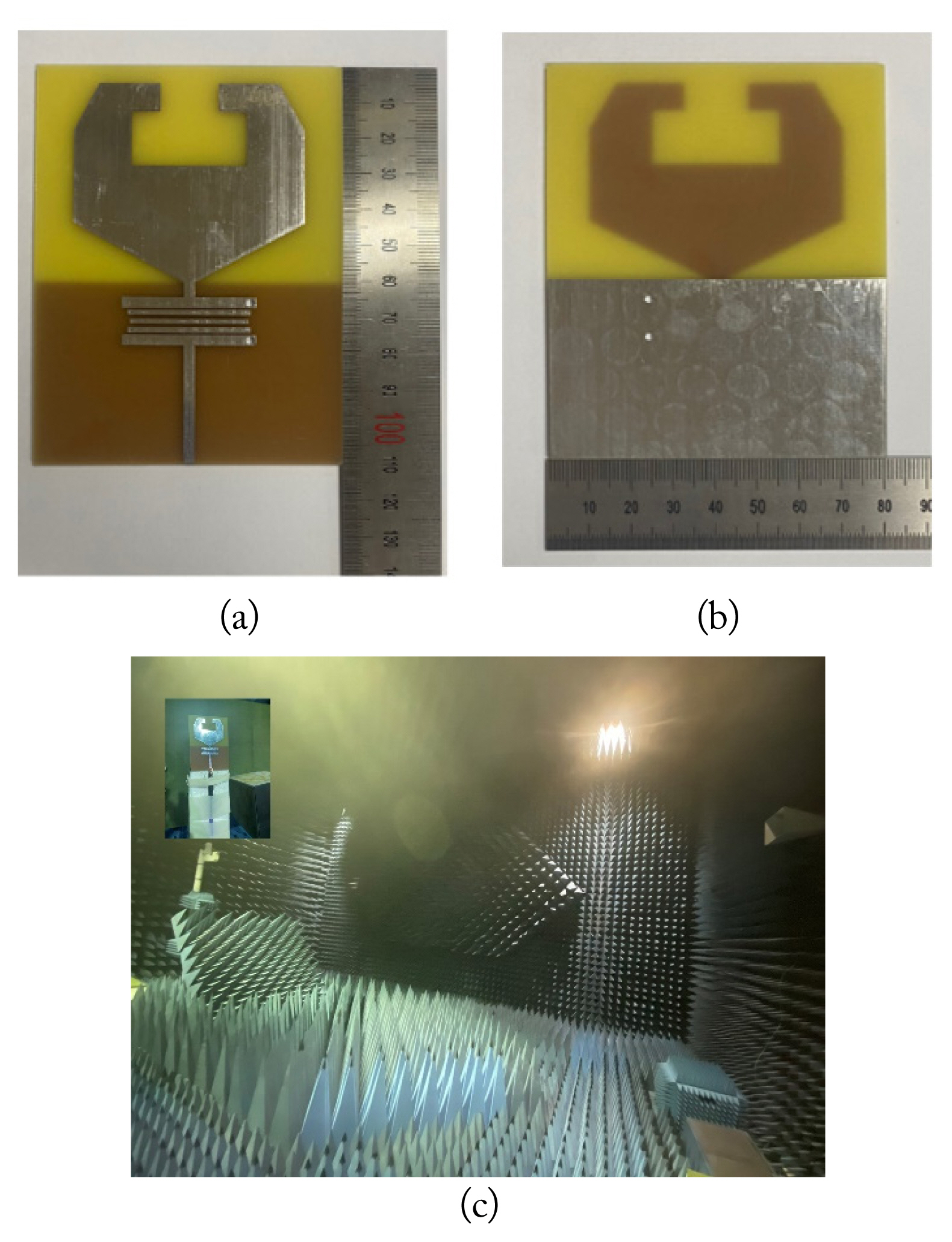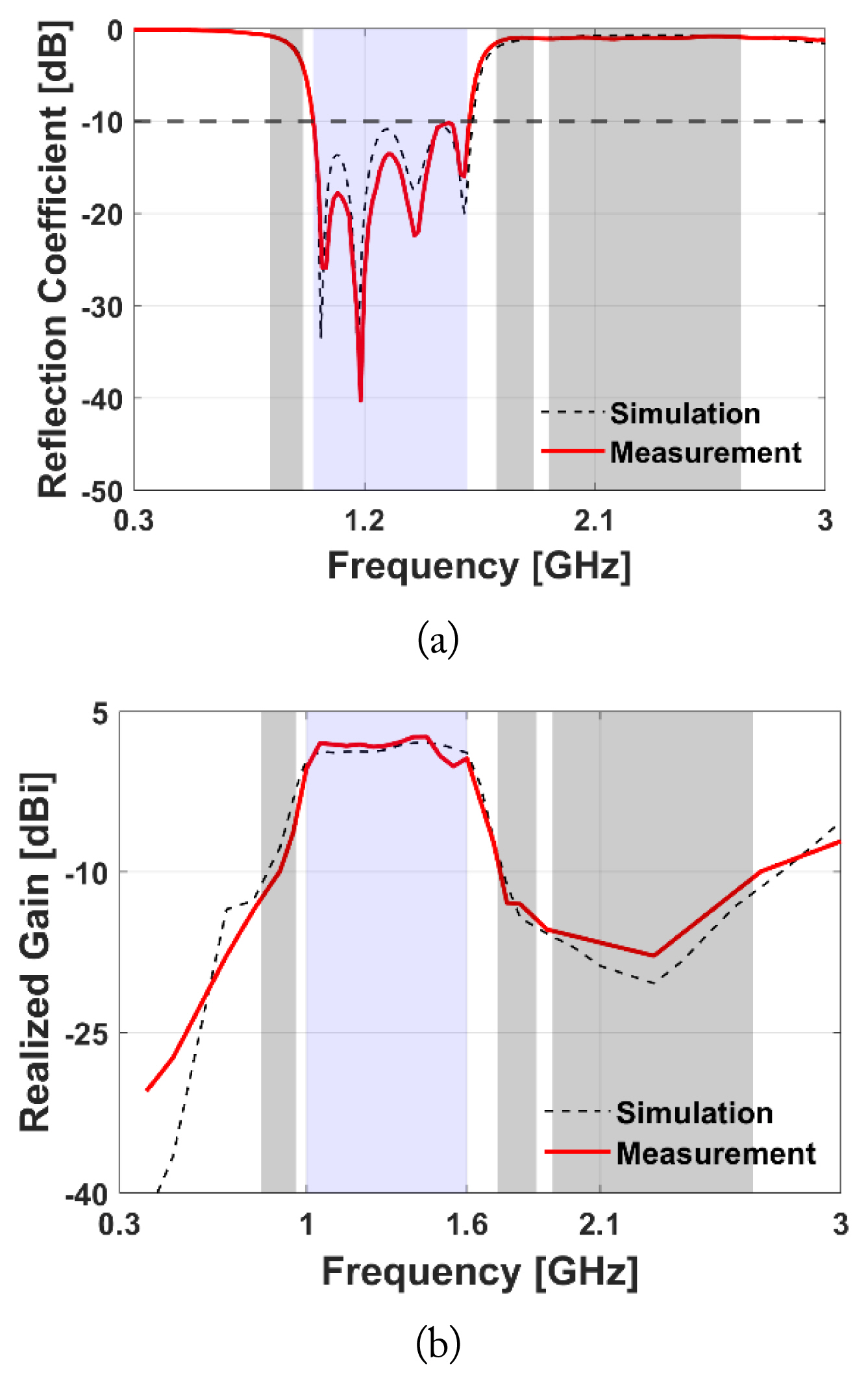I. Introduction
Partial discharge (PD) sensors for the ultra-high frequency (UHF) method are widely used to detect PD signals in high-voltage power equipment, such as power transformers, gas-insulated switchgears, and power cables [1ŌĆō3]. PD sensors are generally classified as internal or external sensors, depending on the installation location. The internal sensor has the advantages of anti-disturbance and high sensitivity [4]. However, its installation is challenging because it should be installed at the first design stage of the high-voltage power equipment [5]. Furthermore, the maintenance of the internal sensor is impossible in high-voltage power equipment in operation [6]. On the other hand, the external PD sensor is easy to install and maintain [2]. External PD sensors have some requirements. First, the external sensor requires a compact size for the on-site installation [7ŌĆō9]. Second, the external sensor requires the microwave filter to block LTE signals (0.829ŌĆō0.959 GHz, 1.715ŌĆō1.860 GHz, and 1.920ŌĆō2.670 GHz in South Korea) [10]. Note that the spectrum of LTE signals overlaps with the PD signal counterpart, and its magnitude cannot be negligible. Recently, the filtenna, an antenna with a filtering characteristic, was proposed for good matching performance and miniaturization [11]. The filtenna can reduce the impedance mismatch because a filtering structure can be designed based on the input impedance of an antenna, not the characteristic impedance (50 ╬®). In addition, the filtenna can miniaturize the overall microwave system since no external filters are used [12ŌĆō19].
In this work, we propose a UHF filtenna to detect PD signals and simultaneously block LTE signals. The proposed UHF filtenna is highly suitable for the external PD sensor since it can miniaturize the PD detection system thanks to no use of external filters. In consideration of the PD and LTE band spectrum, the target operating frequency range of the UHF filtenna is set as 1ŌĆō1.6 GHz [20]. The proposed UHF filtenna is based on the printed monopole antenna integrated with an interdigital bandpass geometry for its compact size. Measurement results show that the proposed UHF-printed monopole filtenna operates adequately in the frequency range of interest and simultaneously suppresses LTE signals effectively. The remainder of this paper is organized as follows: We first present the design of the printed monopole antenna and then introduce the UHF-printed monopole filtenna. Next, experimental results of the fabricated PD filtenna are presented. Finally, concluding remarks are provided.
II. Design
First, we present the simple antenna design considered in this work. The printed monopole antenna is designed on a 1.6 mm thick FR-4 substrate (╔ør = 4.4, tan╬┤ = 0.02). Fig. 1 shows the schematic of the printed monopole antenna. The designed antenna is excited to a 50-╬® microstrip line through the SMA connector. The radiator of the printed monopole antenna is modified from an octagonal shape with an inverted T-shape slot at the top center [21, 22].
The lowest operating frequency is determined by the length of the radiator (LP) shown in Fig. 2(a). In this work, the length of the radiator (LP) is chosen as 55 mm, meaning that the lowest resonant frequency is 0.91 GHz in terms of the ŌłÆ10 dB reflection coefficient. Fig. 2(b) shows the simulated reflection coefficient of the printed monopole antenna with respect to the width of the radiator (WP). The width of the radiator (WP) is determined as 60 mm, which has good matching performance in the frequency range of interest. All other geometrical parameters are optimized, and the final dimensions of the printed monopole antenna designed are listed in Table 1.
Fig. 3 shows the surface current densities of the designed printed monopole antenna at 0.9 GHz, 1.3 GHz, 1.8 GHz, and 2.3 GHz. It is observed that the surface current flows well on the radiator at all frequencies. Both the reflection coefficient and the surface current density indicate that the designed, printed monopole antenna operates in not only the target frequency range but also in the LTE bands. Therefore, a filtering function structure should be integrated with the printed monopole antenna such that it works exclusively in the target operating frequency band. In this work, we realized the bandpass filtering geometry inside the printed monopole antenna for compactness. In specific, the interdigital bandpass filter is implemented in the microstrip line.
Fig. 4 shows the schematic of the interdigital bandpass filter consisting of the fifth-order resonators, which are symmetric with respect to the third resonator [23]. The via holes are located at the end of the resonators opposite to each other adjacent to the resonators such that the currents going through the adjacent resonators are out of phase. Note that the interdigital bandpass filter should be designed by considering the input impedance of the radiator, not 50 ╬®. The input impedance of the radiator is obtained by the de-embedding option of the Ansys HFSS, and it changes with the frequency, as shown in Fig. 5.
Filtering performance in the frequency range of interest is dominantly determined by the resonator length and the spacing between resonators due to the electric and magnetic couplings [24ŌĆō29]. First, we investigate the effect of the resonator length on filtering performance. Note that the length of each resonator should be different [27], and in this work, we set LR2 = LR1 ŌłÆ 3 mm, LR3 = LR1 ŌłÆ 4 mm. Fig. 6 shows the simulated reflection coefficient of the printed monopole filtenna versus LR1. The blue box shows the target operating frequency range of the designed UHF-printed monopole filtenna (1ŌĆō1.6 GHz). As shown in Fig. 6, we obtain the following resonator length for good filtering performance: LR1 = 35 mm, LR2 = 32 mm, and LR3 = 31 mm. Next, we examine the spacing between resonators. As shown in Fig. 7, good filtering performance can be achieved for S12 = 0.45 mm and S23 = 0.9 mm. Table 2 lists the optimized dimensions of the designed interdigital bandpass filter in printed monopole filtenna. Fig. 8 illustrates the final schematic design of the proposed printed monopole filtenna. Fig. 9 compares the simulated results of the proposed printed monopole filtenna and the conventional printed monopole antenna. Here, the gray boxes indicate the LTE bands. Fig. 9(a) shows the simulated reflection coefficient, and it is clearly observed that the proposed filtenna operates in the target operating frequency range exclusively compared to the printed monopole antenna. The ŌłÆ10 dB S11 bandwidth of the designed filtenna is from 1 GHz to 1.62 GHz. In addition, as shown in Fig. 9(b), the realized gain of the designed printed monopole filtenna is significantly reduced in the LTE bands. The realized gain is ŌłÆ7.72 dBi at 0.9 GHz, ŌłÆ14.29 dBi at 1.8 GHz, and ŌłÆ20.40 dBi at 2.3 GHz. Fig. 10 shows the surface current densities of the designed UHF filtenna. It is clearly observed that the surface current does not flow into the radiator in the LTE bands due to our designed interdigital bandpass geometry.
III. Fabrication and Measurement
Fig. 11 displays the fabricated UHF filtenna and measurement setup. The fabricated UHF filtenna is measured in an anechoic chamber. According to Fig. 12, the measured results of the fabricated UHF filtenna generally agree with the simulated results. The discrepancies between the measured results and simulated results may be caused by fabrication and measurement errors. The measured reflection coefficient of the fabricated UHF filtenna is less than ŌłÆ10 dB from 1.00 GHz to 1.61 GHz. The measured peak realized gain of the UHF filtenna is ŌłÆ9.93 dBi at 0.9 GHz, ŌłÆ13 dBi at 1.8 GHz, ŌłÆ17.83 dBi at 2.3 GHz, and 2.64 dBi at 1.45 GHz. The fabricated UHF filtenna suppresses LTE signals effectively and operates well in the frequency range of interest simultaneously, as Fig. 12 illustrates. Fig. 13 shows the radiation pattern of the UHF filtenna at the operating frequencies. The measured radiation patterns are similar to the simulated radiation patterns. The yz-plane of the radiation patterns is illustrated in Fig. 13(a), 13(c), and 13(e). The xz-plane of the radiation patterns is illustrated in Fig. 13(b), 13(d), and 13(f). The radiation pattern of the proposed UHF filtenna is omnidirectional.
IV. Conclusion
In this work, we proposed the UHF filtenna for an external PD sensor. The proposed UHF filtenna is based on the printed monopole antenna with a built-in bandpass geometry. The proposed radiator is modified from an octagonal shape with an inverted T-shape slot, and the compact bandpass filter is realized by the interdigital geometry. The proposed UHF filtenna is fabricated and measured. The fabricated UHF filtenna can significantly block LTE signals while maintaining good antenna performance in the frequency range of interest. The reflection coefficient of the UHF filtenna is less than ŌłÆ10 dB in the frequency range from 1 GHz to 1.6 GHz, and the peak realized gain is ŌłÆ9.93 dBi at 0.9 GHz, ŌłÆ13 dBi at 1.8 GHz, ŌłÆ17.83 dBi at 2.3 GHz, and 2.64 dBi at 1.45 GHz. The radiation patterns are omnidirectional patterns in the frequency range of interest. Experimental results demonstrate that the proposed UHF-printed monopole filtenna is highly suitable for the external PD sensor.




